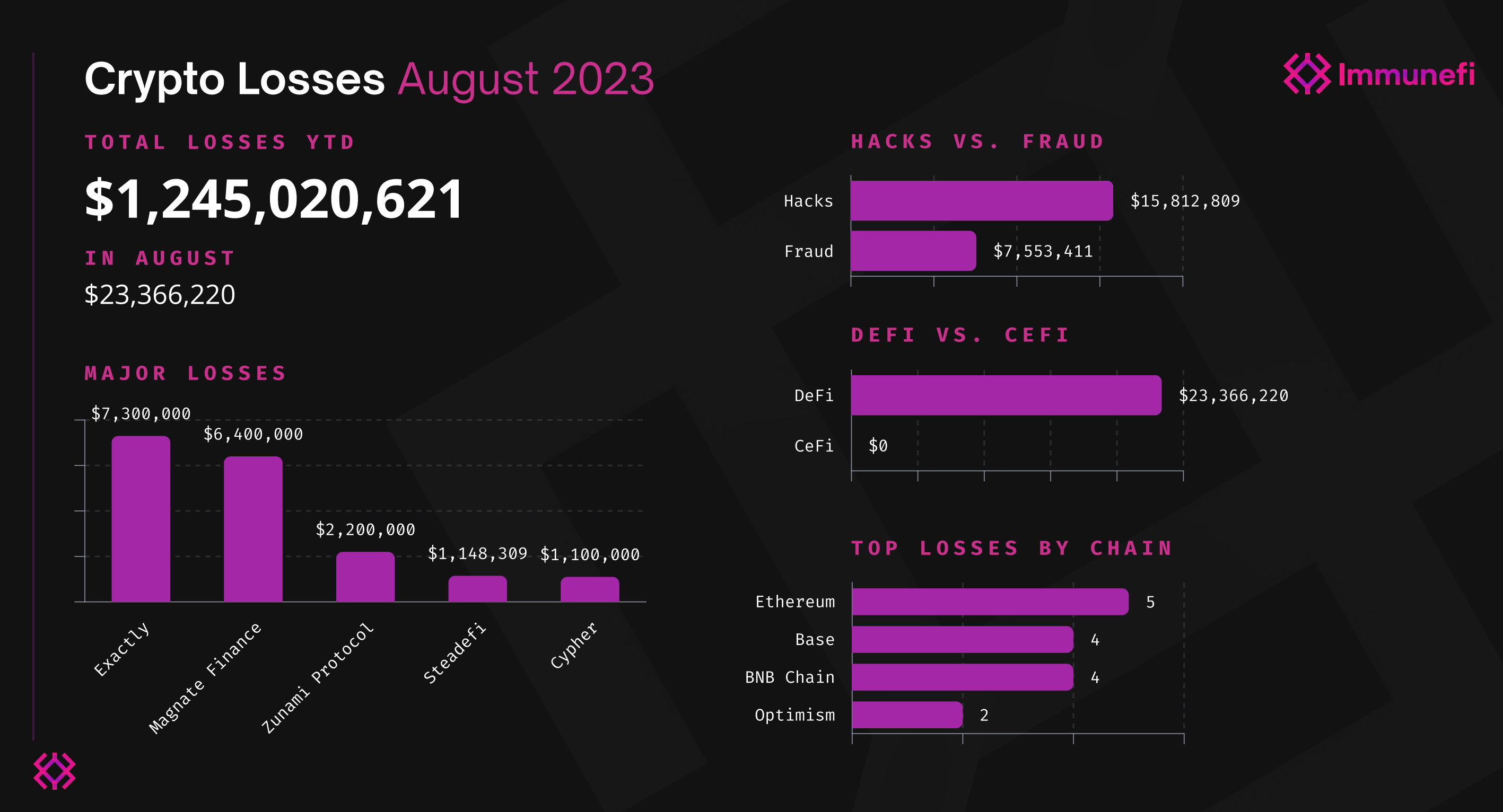The cryptocurrency trade continues to evolve at a fast tempo, bringing with it a host of cybersecurity challenges.
While nearly all cryptocurrencies are secured by cryptography, which makes these digital belongings immune to hacks, counterfeit, or double-spend, the trade stays susceptible to a vary of exterior threats.
Phishing assaults, malware, vulnerabilities in crypto wallets or exchanges, or flaws in sensible contracts are some extra notable ache factors that may show pricey for customers.
“The blockchain industry faces evolving cybersecurity challenges, with the primary concern being susceptibility to hacks and fraud due to the possibility of stealing assets by exploiting a single point of failure,” Sipan Vardanyan, CEO and Co-Founder at crypto safety agency Hexens, informed Cryptonews.
Vardanyan famous that decentralized applied sciences, corresponding to blockchain, play a key position in enhancing cybersecurity throughout the cryptocurrency ecosystem.
He identified that whereas these applied sciences supply enhanced safety by eradicating intermediaries, in addition they introduce distinctive dangers, together with vulnerabilities in sensible contracts and bridges.
So far this yr, Web3 platforms have misplaced over $1.2 billion in hacks and rug pulls, in accordance to a report from Web3 bug bounty platform Immunefi.
The report revealed a complete of 211 separate incidents contributing to this large sum, with the month of August alone accounting for $23.4 million in losses.

The evaluation revealed that hacks have been the dominant trigger of monetary setbacks, overshadowing fraud.
In August, hacks have been liable for a staggering $15.8 million in losses, constituting a substantial 67.7% of the full month-to-month sum. Fraud accounted for $7.6 million, making up the remaining 32.3%.
Christian Seifert, former Microsoft safety lead and present researcher in Residence on the Forta Network, mentioned the rise of end-user focused scams is the largest problem within the trade.
“Here we have a lot of criminal energy that is directed towards the new (we are all kinda new to this space) web3 user base in an environment that is incredibly complex with little built in protection layers,” he mentioned.
Crypto Security Remains a Critical Concern
Security has been one main barrier to the broader adoption of cryptocurrency, significantly amongst institutional buyers.
Big buyers demand sturdy safety measures to safeguard their belongings towards theft or cyber threats, and the shortage of such measures has been pushing away these buyers from stepping into the trade.
While crypto safety is with out a doubt a important concern, the trade continues to be in its early levels when it comes to defending digital belongings, in accordance to Vardanyan.
“With numerous hacks and exploits occurring, it’s evident that there’s a lot of work to be done to make the field safer.”
Meanwhile, Seifert highlighted that there’s a lot of innovation taking place within the crypto cybersecurity house.
One of one of the best choices for these searching for further safety is Blockfence, which has created a browser extension that acts as a protecting layer and guards towards suspect transactions.
Blockfence combines advanced evaluation with machine studying algorithms and knowledge on hackers and vulnerabilities gathered by the Web3 neighborhood to safeguard customers’ transactions.
It can stop many sorts of assaults, together with phishing assaults and malicious sensible contracts.
However, Seifert famous that scammers aren’t sitting idle both.
“We see them innovating and gaining expertise over time as well. If we leave them unchecked, it represents a serious risk to web3 as a whole.”
Best Practices for Improving Security in Crypto
Cryptocurrency buyers aren’t totally defenseless towards rampant safety incidents.
In reality, customers can take sure safety measures to take advantage of out of one of many fastest-growing industries globally with out worrying about dropping their hand-earned digital belongings.
For people, Vardanyan recommends minimizing third-party dangers by utilizing chilly storage options like {hardware} wallets and working towards good operational safety.
“Additionally, practicing good operational security (OpSec) is crucial; this includes using strong, unique passwords, enabling two-factor authentication, and being cautious of phishing attempts. Keep your private keys secure, ideally in offline, physically-protected storage.”
Furthermore, he emphasised the significance of building a sturdy safety pipeline for organizations, together with rigorous code assessment processes, common safety audits by respected companies, and steady vulnerability monitoring.
Meanwhile, Seifert inspired customers to search out safety layers to shield their holdings, corresponding to browser plugins and wallets with built-in safety protections.
“If your wallet doesn’t have built in security protections, ask your provider why that is not the case; switch to a wallet, like Zengo, that does,” he mentioned.
Nevertheless, to ensure that crypto to keep forward of evolving threats, there’s a want for collaboration between safety consultants and know-how innovators.
“Collaboration between security experts and technology innovators is key to staying ahead in the ever-changing world of crypto security,” Vardanyan mentioned.
For these coming into the crypto house, it’s endorsed that they do intensive analysis earlier than participating with any cryptocurrency undertaking or funding.
They want to confirm a undertaking’s safety practices, group credentials, and observe document.
All in all, because the cryptocurrency trade continues to evolve, it faces evolving cybersecurity challenges.
However, a proactive strategy, steady innovation, and collaboration between consultants and trade stakeholders can assist sort out this subject, safeguarding the way forward for cryptocurrency.


